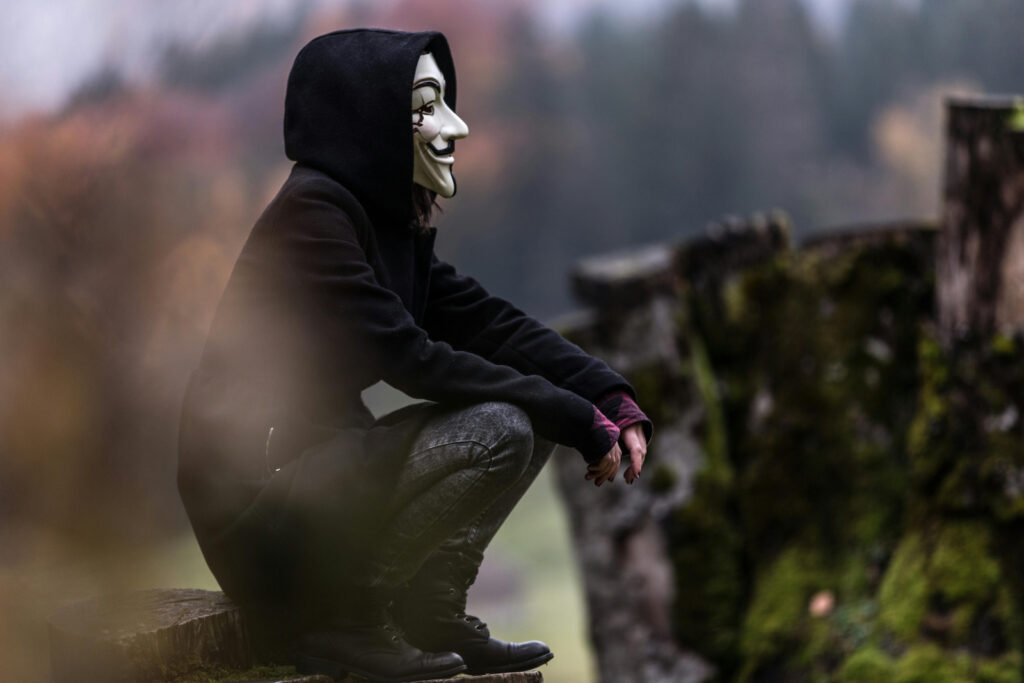The hoodie was initially created for practicality, but has evolved into a potent cultural symbol. Now it doesn’t just keep the head and body warm, it reflects and challenges socio-economic and racial divides in society. This transformation has given the hoodie multiple meanings– for some, it’s a symbol of resistance, and for others, a way for criminals to remain in the shadows. Here we look at the history of the hoodie, to see how it became so polarized.
Who Were the First to Wear Hoodies?
That depends on what you mean by ‘hoodie’. Hooded garments go back centuries. Monks in 13th-century Europe are believed to be the first to see the practical benefits of having your head covering attached to the rest of your clothes. The lack of visibility you get when wearing a hood was supposedly seen as an advantage, as it stopped the monks getting distracted.
The hooded sweatshirt that comes to mind when we think of a hoodie came about in the 1930s. It was designed by Knickerbocker Knitting Company, which we now know as Champion. Initially designed for laborers working in cold environments, the hooded sweatshirt was intended to provide warmth and comfort. They also began producing hoodies for athletes and workers, capitalizing on their practicality and ease of production. This simple, functional garment soon found its way into broader public use, becoming something more than just apparel.

The Journey into Subculture
It was the 1970s when the hoodie started to become a cultural icon and gain widespread popularity. Hip-hop culture was emerging in New York City, and the hoodie was adopted as part of the look. For the youth in urban environments, the hoodie was more than just clothing; it became a part of their identity, a representation of counterculture.

This association helped propel the hoodie into mainstream fashion. It was also popular among boxers, with the most famous not even a real boxer, but Rocky in the 1977 movie. Skaters and other subcultures joined the bandwagon in the 80s and 90s, when the term ‘hoodie’ first became widely used.
Contradictory Meanings
As the hoodie became more prevalent, its cultural significance grew more complex. It straddles a fine line between various, often contradictory, meanings. It’s a symbol of comfort and casual style, but also associated with inequality, rebellion, and fear. You see them on the streets, and also on the catwalk.
The hoodie’s association with youth culture is double-edged. For many young people, it is a symbol of defiance and resistance. However, for others, the hoodie can evoke fear and prejudice. It can make you feel safe, or be seen as a threat.
This was starkly illustrated in the tragic case of Trayvon Martin, a black teenager who was shot in 2012 by a man whose (successful) self-defense claim in court seemed to rest mostly on the fact that Trayvon was wearing a hoodie. Heightened pride and defiance can also reinforce the concerns of the racially prejudiced.

His death ignited widespread protests and brought the hoodie to the forefront of discussions about racial profiling and social justice. Wearing hoodies in solidarity was common at the protests, and celebrities such as LeBron James and Wyclef Jean wore them in Trayvon’s honor. The sight of a young black man in a hoodie became a powerful image representing racial bias and the ongoing struggle for equality.

Fashion and Social Commentary
In recent years, the hoodie has diversified, with 2023 seeing it at the height of vogue. High-end fashion houses such as Miu Miu have embraced it, reimagining it as a luxury item with a bit of edge to it. It has also, like all clothing, become more normalized over time. Once considered far too casual for the workplace, with each generation it becomes socially acceptable in more situations, including many places of work.
A Symbol of Resistance
Despite its high-fashion iterations, the hoodie retains its connotations, and is frequently utilized by activists to challenge social and racial biases. The Black Lives Matter movement has prominently used the hoodie to draw attention to issues of racial inequality.

Wearing hoodies during protests and public demonstrations, activists highlight the garment’s connection to social injustice and call for an end to racial profiling and violence against marginalized communities. The anonymity provided by the hood can serve as a form of protection, allowing individuals to participate in movements without fear of identification. The hoodie’s transformation into a symbol of resistance is why it is so culturally significant. Having moved beyond being merely a piece of clothing, it is now a statement of identity and protest.
Moreover, the hoodie’s accessibility – it is affordable and widely available – makes it an ideal uniform for grassroots movements. The hoodie is a democratic garment, worn by people from all walks of life. Its widespread use in protests around the world, from Occupy Wall Street to anti-austerity demonstrations in Europe, illustrates its global resonance as a symbol of defiance and solidarity.
Where Next for the Hoodie?
The hoodie’s cultural journey from a practical garment to a symbol of socio-political resistance is present throughout modern culture. It embodies the tension between different movements, social classes, and racial groups. Whether seen as a marker of rebellion, a fashion statement, or a symbol of resistance, the hoodie’s role as a cultural icon can’t be doubted.

It could just as easily go back the other way though. As it becomes more normal, and the generations who have grown up with the hoodie become society’s elders, it may lose some of the symbolism it has built up. When young people want to rebel, they can’t be wearing the same clothes as their grandparents. It seems we’re still some way off that though, and for now at least, the hoodie remains a symbol of the ongoing struggle for equality and justice.
At Wordans you can get every type of hoodie you can imagine, and much more besides. Take a look at our website for all your blank apparel, accessories, and promotional products. Our Instagram, @wearewordans, has more ideas for you, and you can see our products in action.












